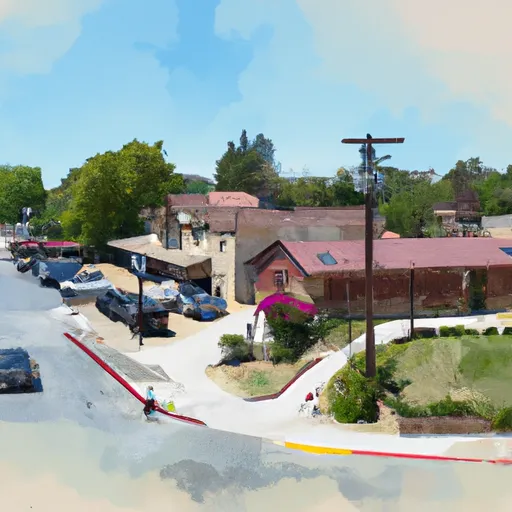-
 Snoflo Premium
Snoflo Premium
Get unlimited access to all our content
With no Ad interruptions! - Start Your Free Trial Login with existing account
Maxwell
Eden Index
Climate
9.5
•
Recreation
2.8
•
Community
2.4
•
Safeguard
5.4/10

Maxwell, California, located in Colusa County, offers a pleasant climate characterized by hot, dry summers and cool, wet winters. Summers can reach temperatures above 100 degrees Fahrenheit, while winters are mild, with average temperatures around 50 degrees. Precipitation mainly occurs between November and April, with an average annual rainfall of approximately 19 inches.
Hydrologically, Maxwell benefits from its proximity to the Sacramento River, which flows nearby. This water source, combined with the region's fertile soil, makes it an ideal location for farming and agriculture.
The area surrounding Maxwell provides various outdoor recreation opportunities. The Sacramento River offers excellent fishing, where anglers can catch a variety of fish species, including salmon, steelhead trout, and catfish. Outdoor enthusiasts can explore the Sacramento National Wildlife Refuge, just a short drive away, to witness diverse wildlife and engage in activities like bird watching and hiking. Additionally, Maxwell is close to several reservoirs and lakes, such as Stony Gorge Reservoir and East Park Reservoir, where visitors can enjoy boating, swimming, and picnicking.
Overall, Maxwell, California provides a favorable climate, access to water resources, and ample outdoor recreation options, making it an appealing destination for nature lovers and those seeking agricultural opportunities.
What is the Eden Index?
The Snoflo Eden Index serves as a comprehensive rating system for regions, evaluating their desirability through a holistic assessment of climate health, outdoor recreation opportunities, and natural disaster risk, acknowledging the profound impact of these factors on livability and well-being.
Climate Health Indicator (CHI): 9.5
Maxwell receives approximately
484mm of rain per year,
with humidity levels near 63%
and air temperatures averaging around
17°C.
Maxwell has a plant hardyness factor of
9, meaning
plants and agriculture in this region tend to thrive here all year round.
By considering the ideal temperature range, reliable water supplies, clean air, and stable seasonal rain or snowpacks, the Climate Health Indicator (CHI) underscores the significance of a healthy climate as the foundation for quality living.
A healthy climate is paramount for ensuring a high quality of life and livability in a region, fostering both physical well-being and environmental harmony. This can be characterized by ideal temperatures, reliable access to water supplies, clean air, and consistent seasonal rain or snowpacks.
Weather Forecast
Streamflow Conditions
Lower Sacramento
Area Rivers
Lower Sacramento
Snowpack Depths
Lower Sacramento
Reservoir Storage Capacity
Lower Sacramento
Groundwater Levels
Recreational Opportunity Index (ROI): 2.8
The Recreational Opportunity Index (ROI) recognizes the value of outdoor recreational options, such as parks, hiking trails, camping sites, and fishing spots, while acknowledging that climate plays a pivotal role in ensuring the comfort and consistency of these experiences.
Access to outdoor recreational opportunities, encompassing activities such as parks, hiking, camping, and fishing, is crucial for overall well-being, and the climate plays a pivotal role in enabling and enhancing these experiences, ensuring that individuals can engage in nature-based activities comfortably and consistently.
Camping Areas
| Campground | Campsites | Reservations | Toilets | Showers | Elevation |
|---|---|---|---|---|---|
| Colusa - Sacramento River State Rec Area | 14 | 65 ft | |||
| Cache Creek Canyon County Park | 45 | 646 ft | |||
| Colusa County Fairgrounds | 38 | 53 ft |
Nearby Ski Areas
Catastrophe Safeguard Index (CSI):
The Catastrophe Safeguard Index (CSI) recognizes that natural disaster risk, encompassing floods, fires, hurricanes, and tornadoes, can drastically affect safety and the overall appeal of an area.
The level of natural disaster risk in a region significantly affects safety and the overall livability, with climate change amplifying these risks by potentially increasing the frequency and intensity of events like floods, fires, hurricanes, and tornadoes, thereby posing substantial challenges to community resilience and well-being.
Community Resilience Indicator (CRI): 2.4
The Community Resilience Indicator (CRI) recognizes that education, healthcare, and socioeconomics are crucial to the well-being of a region. The CRI acknowledges the profound impact of these elements on residents' overall quality of life. By evaluating educational resources, healthcare accessibility, and economic inclusivity, the index captures the essential aspects that contribute to a thriving community, fostering resident satisfaction, equity, and social cohesion.

